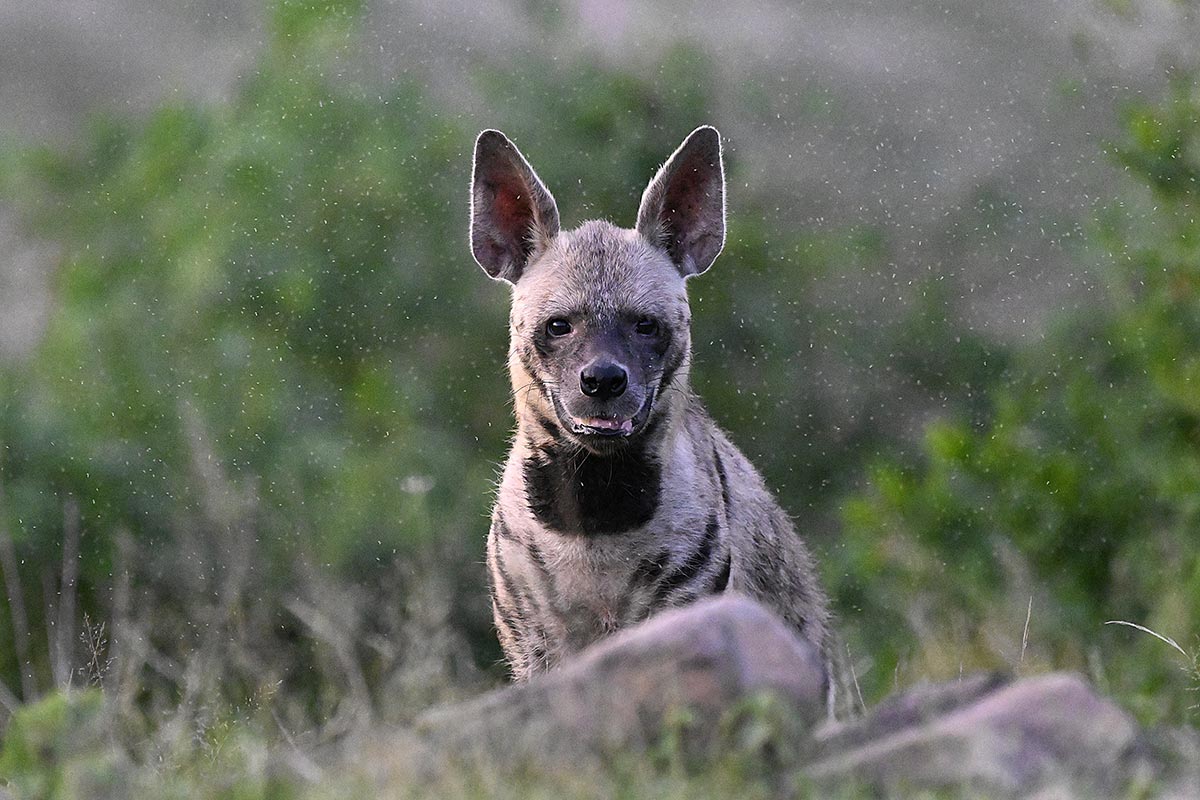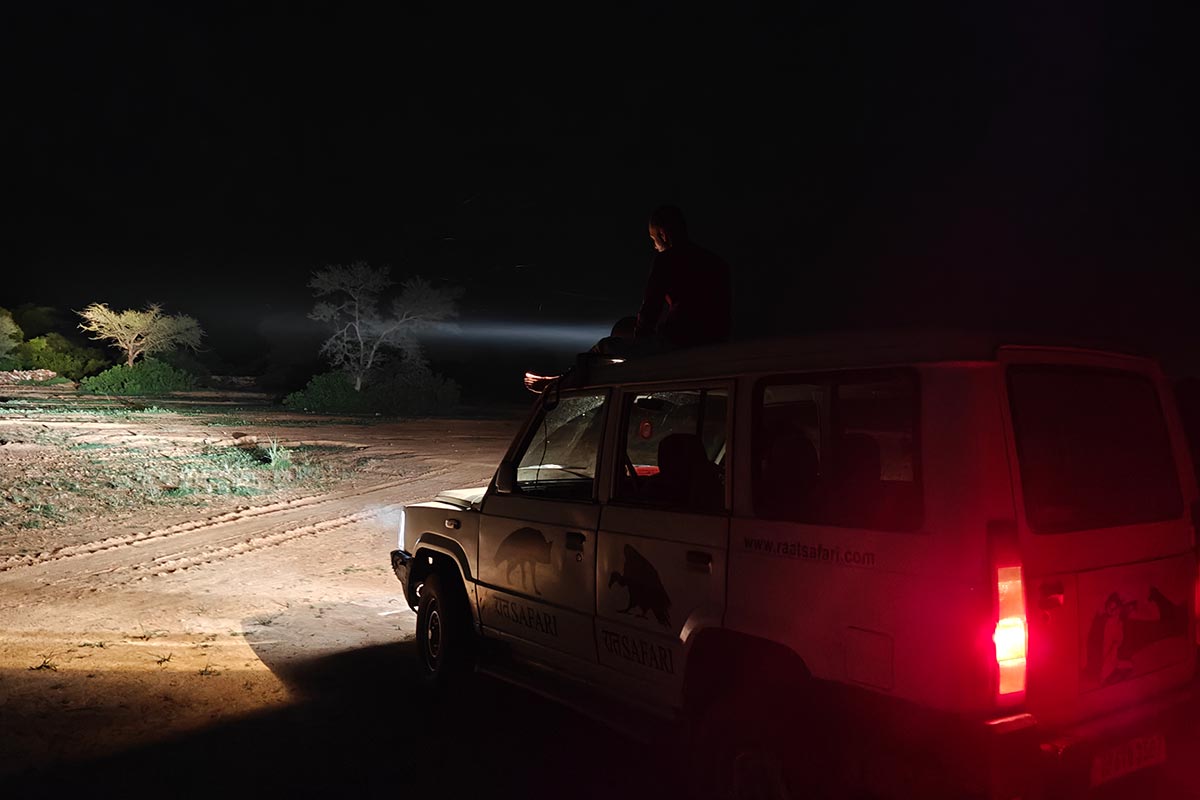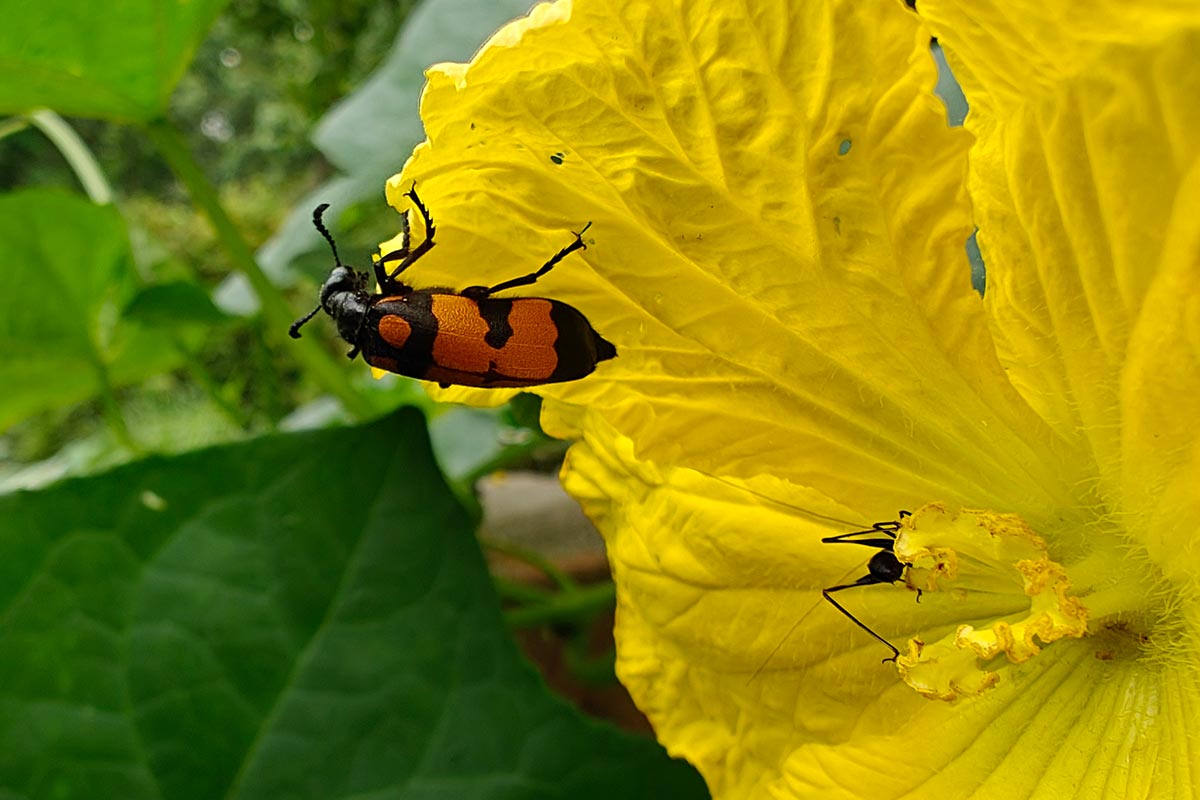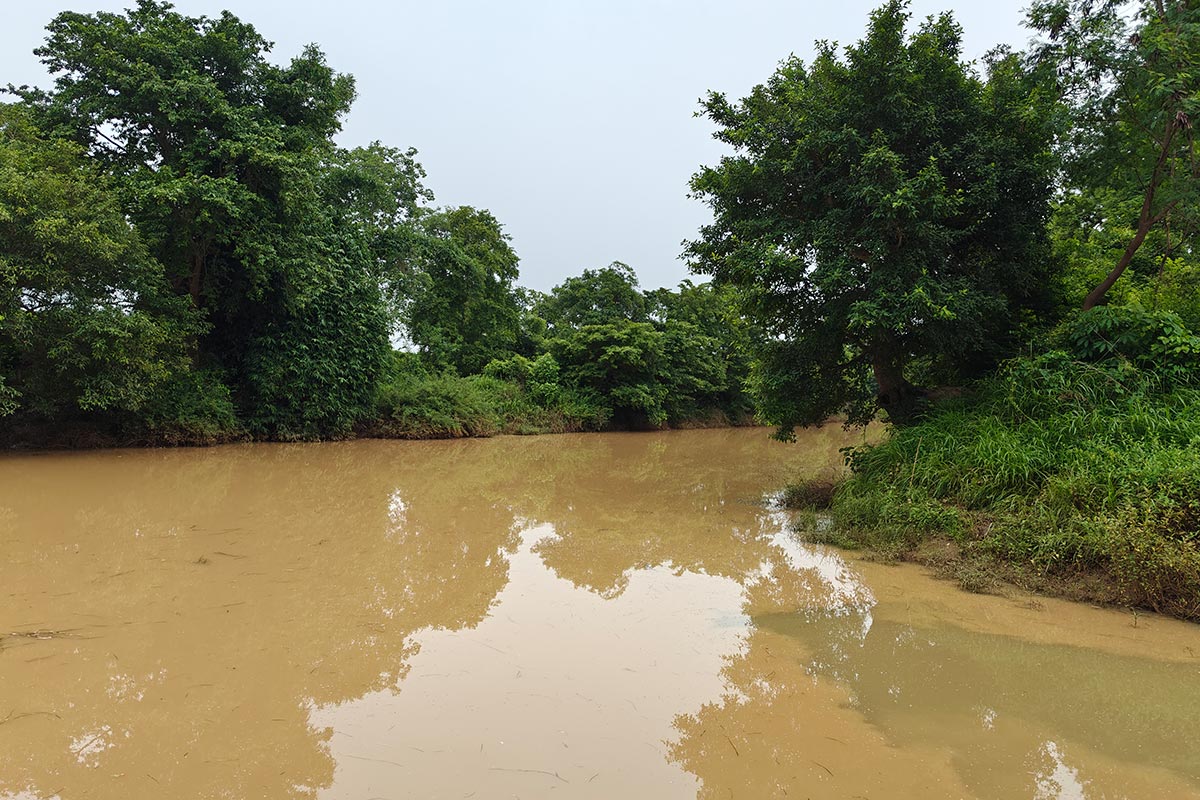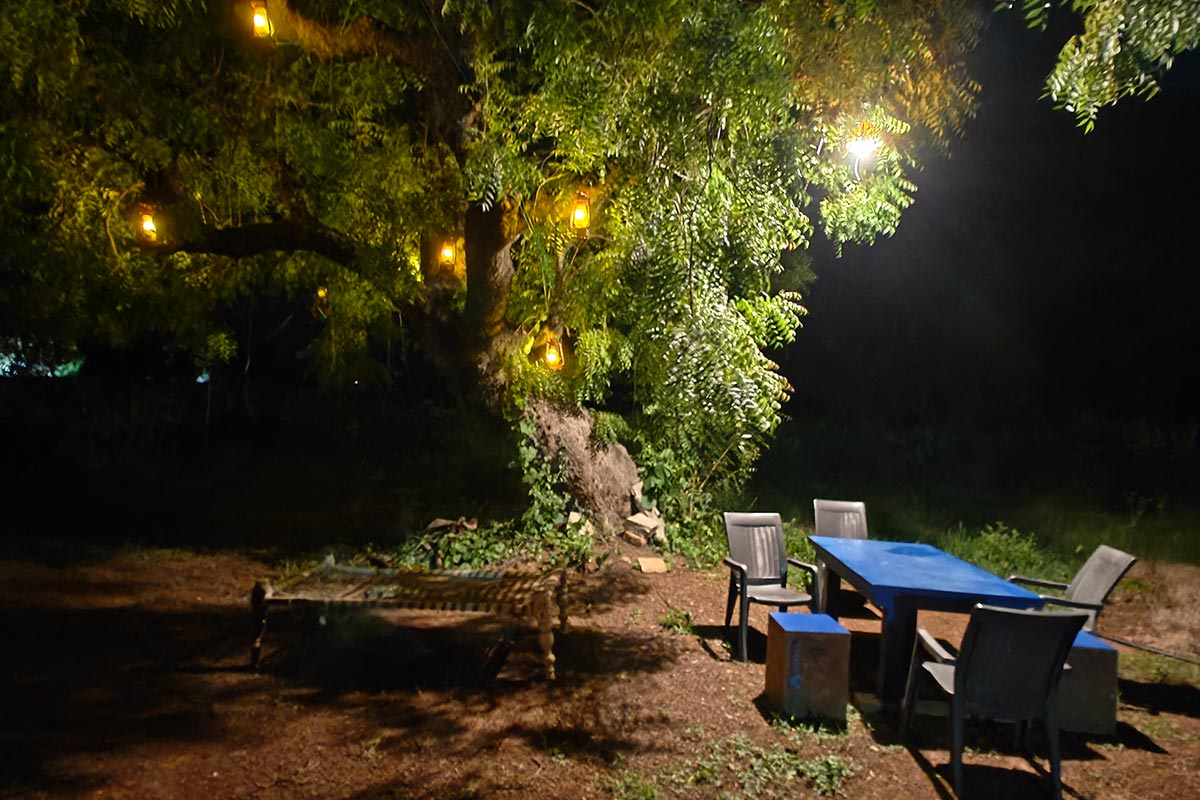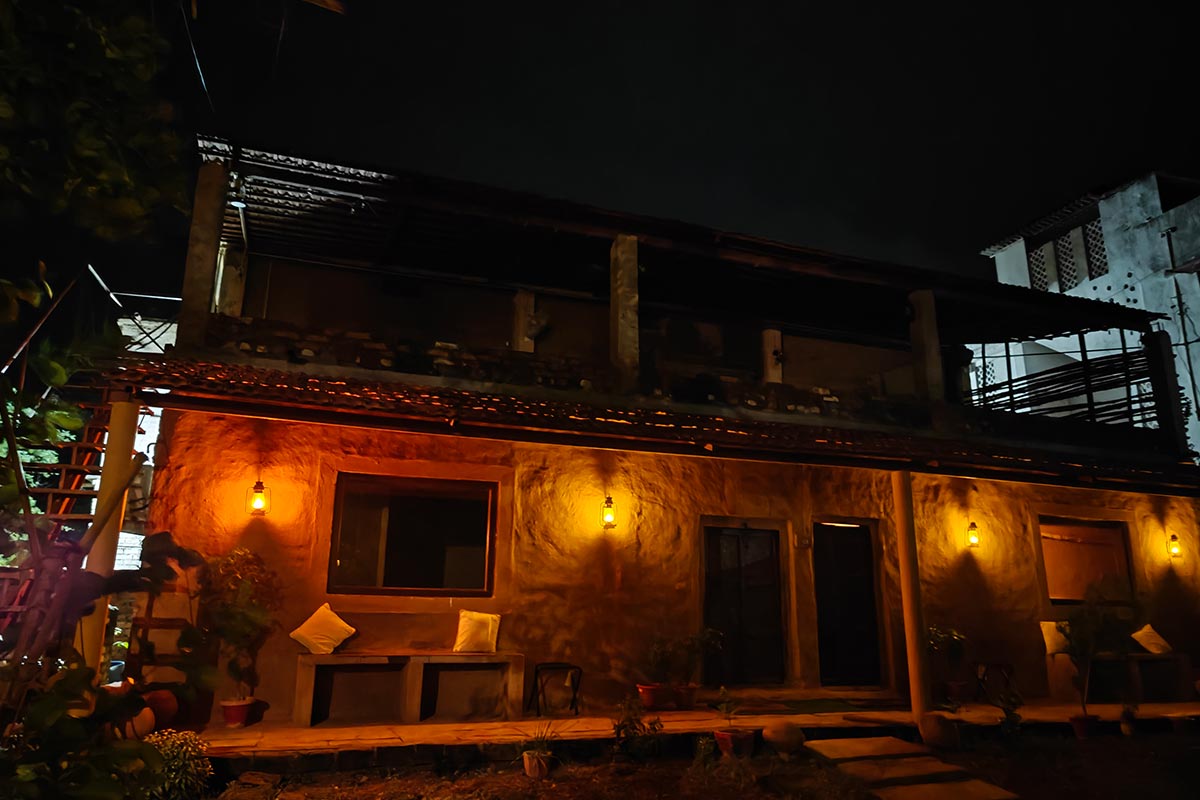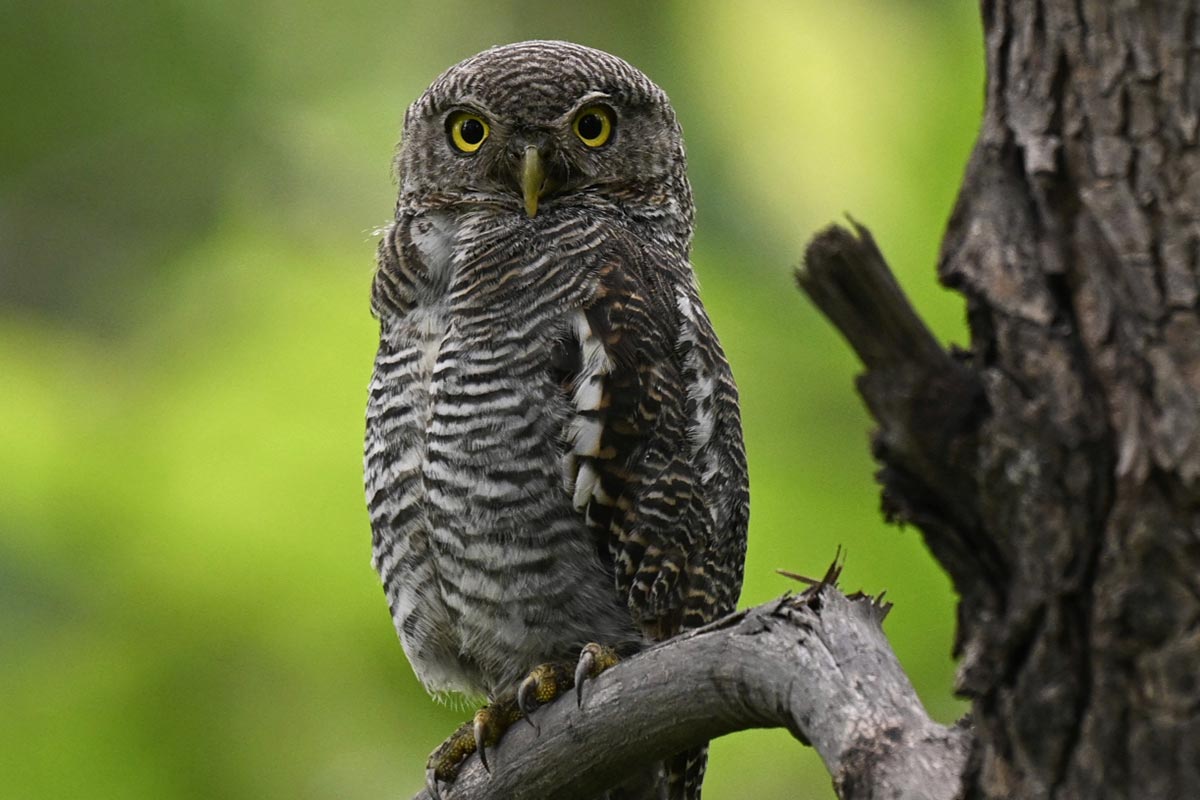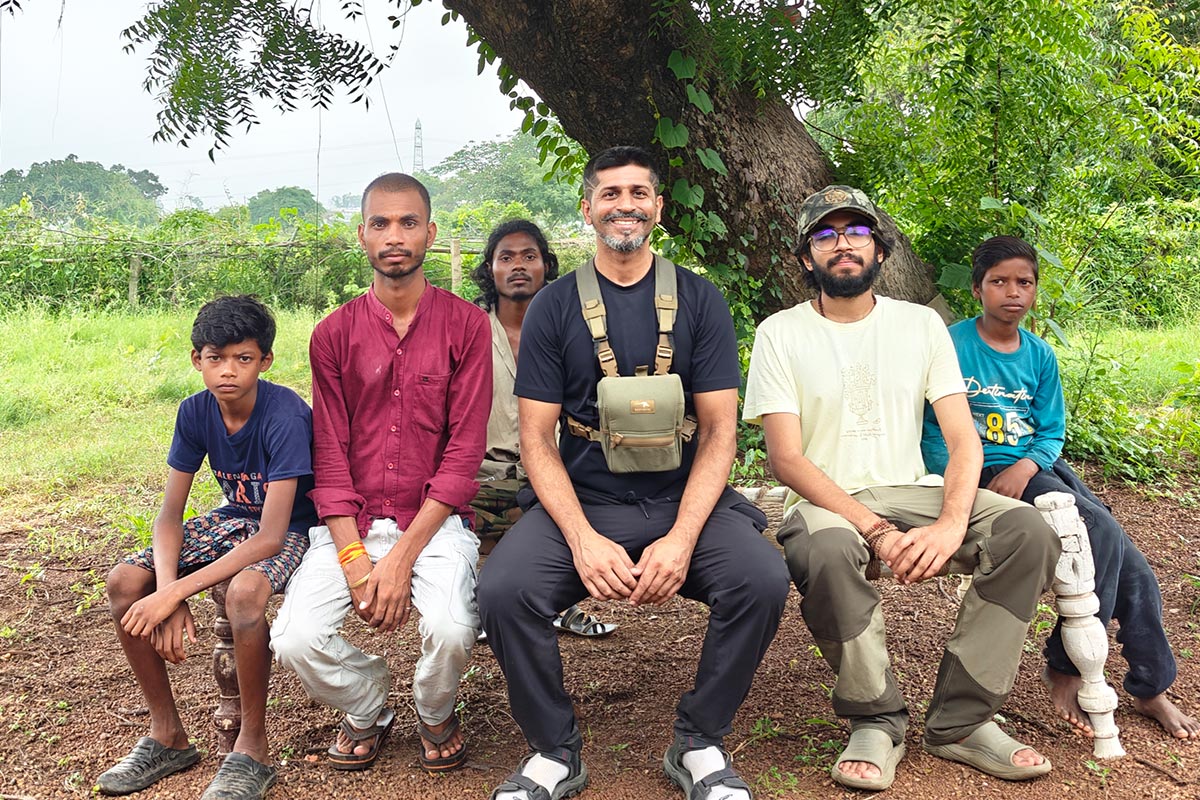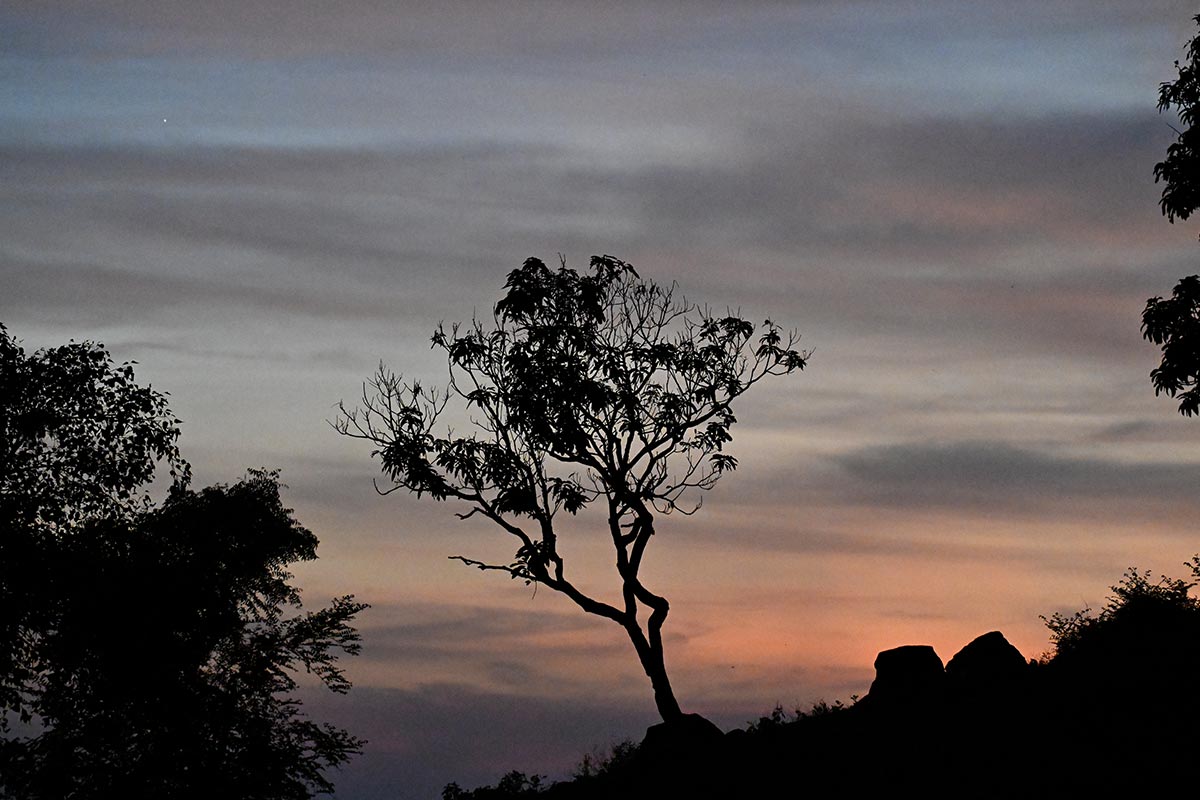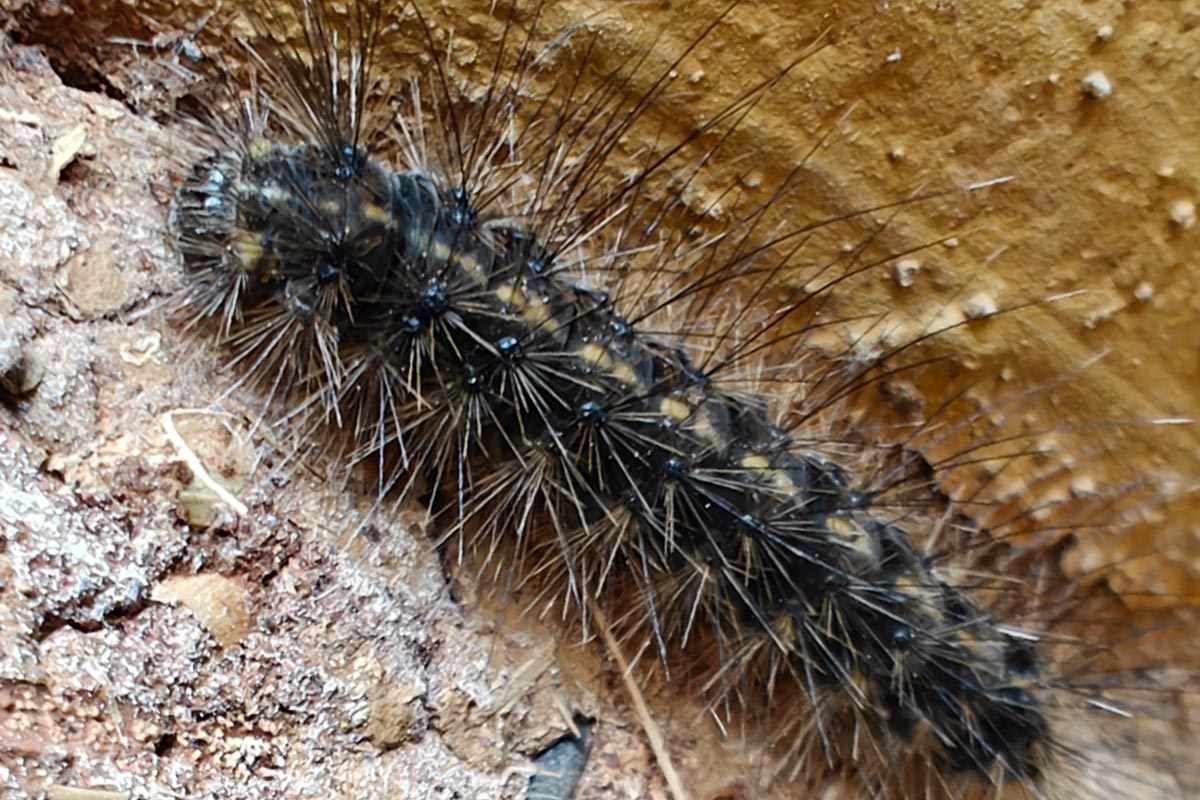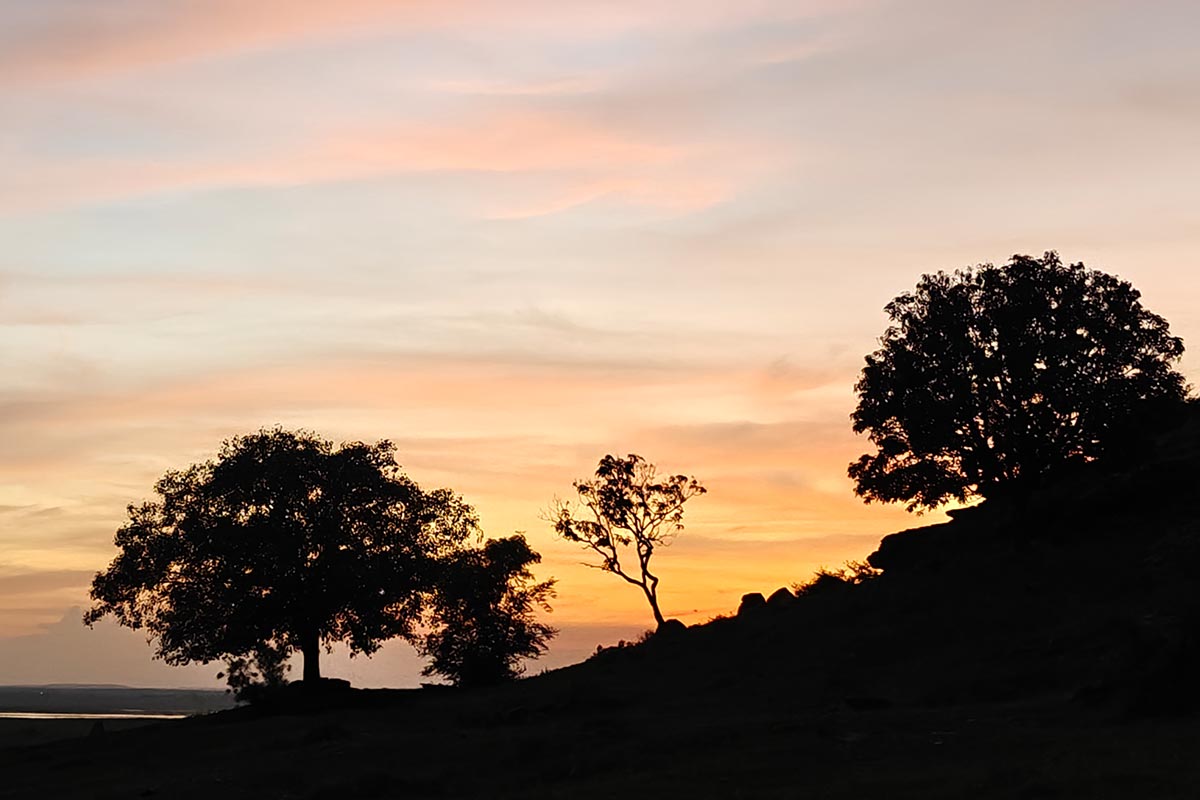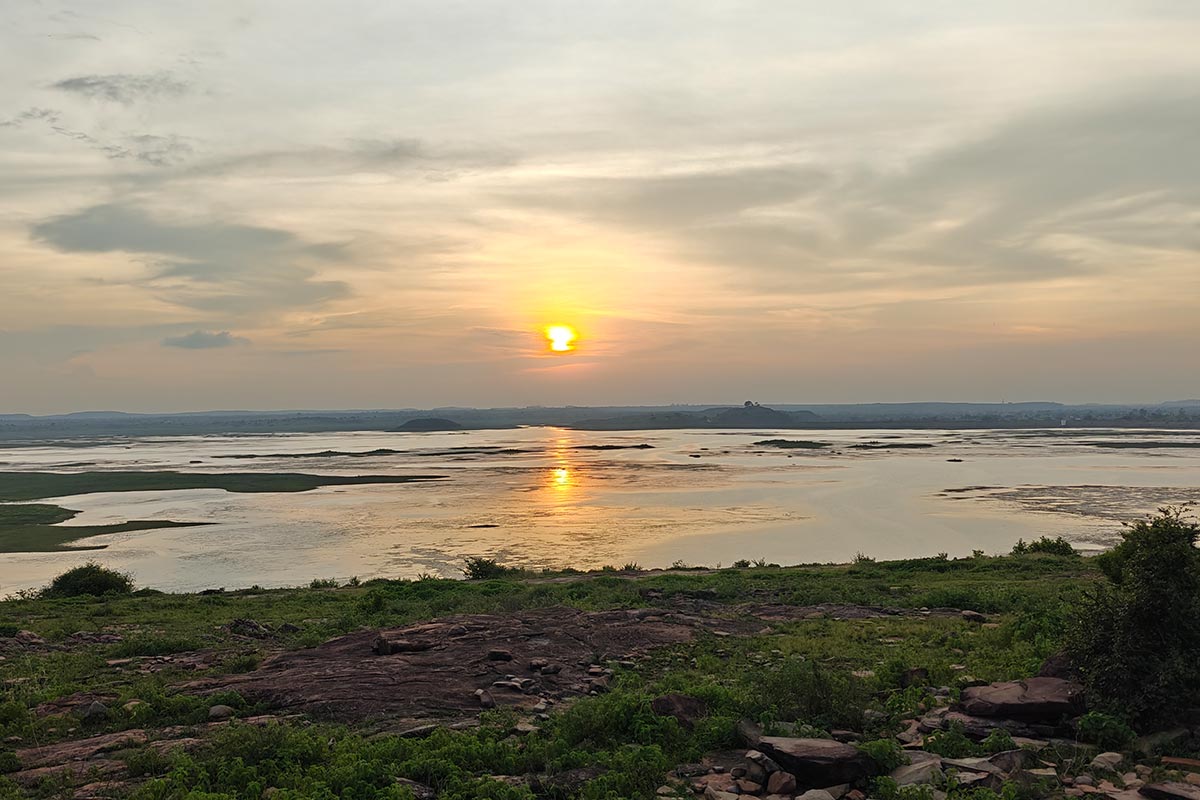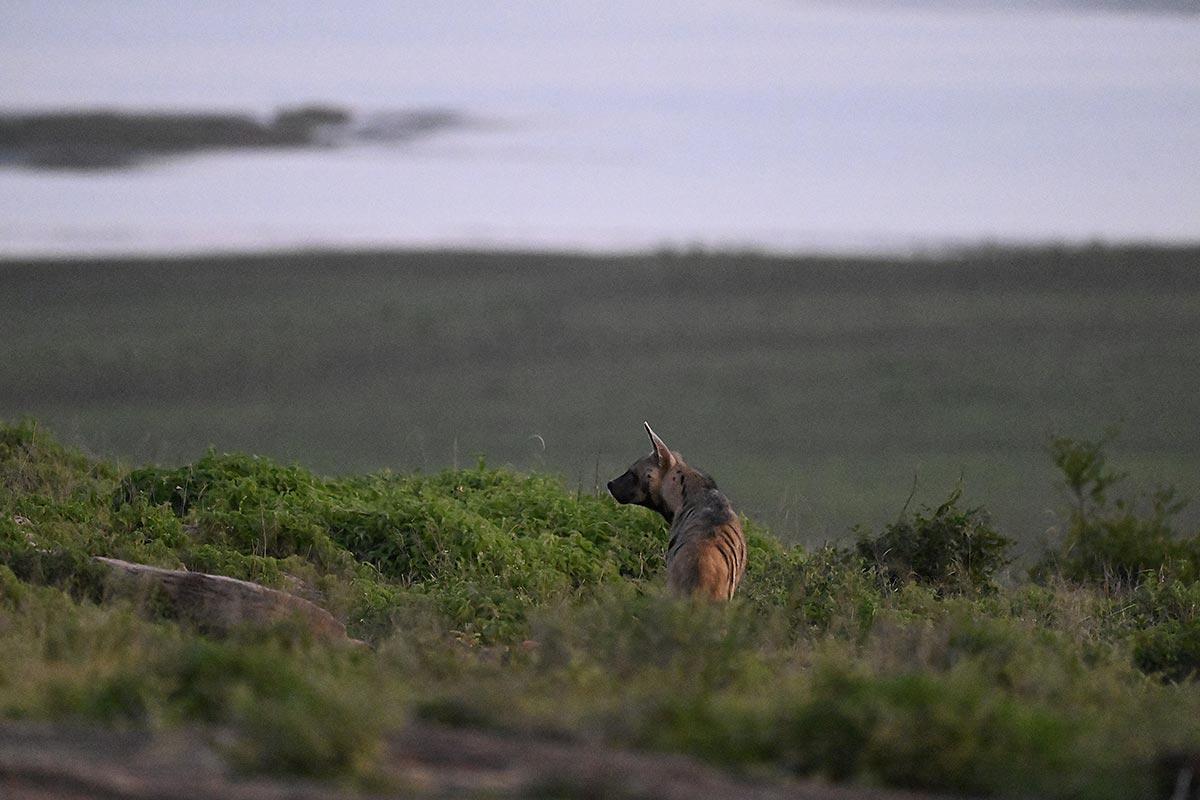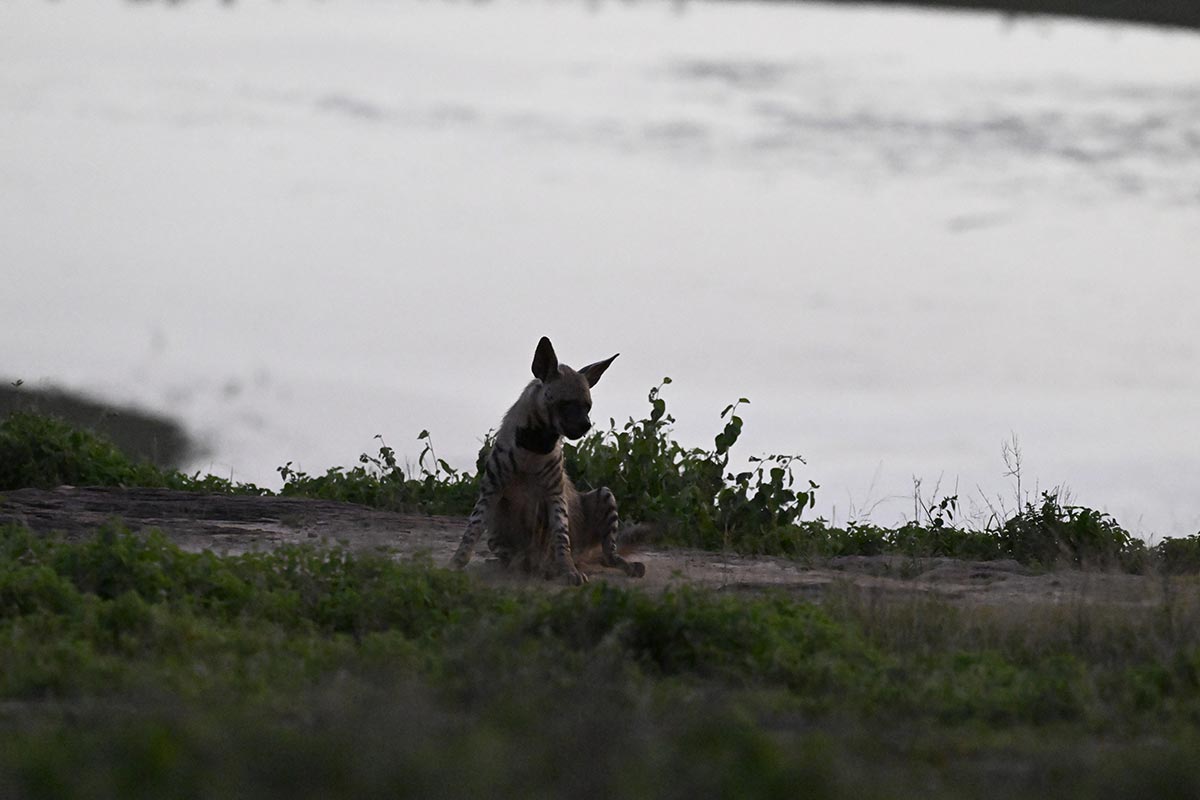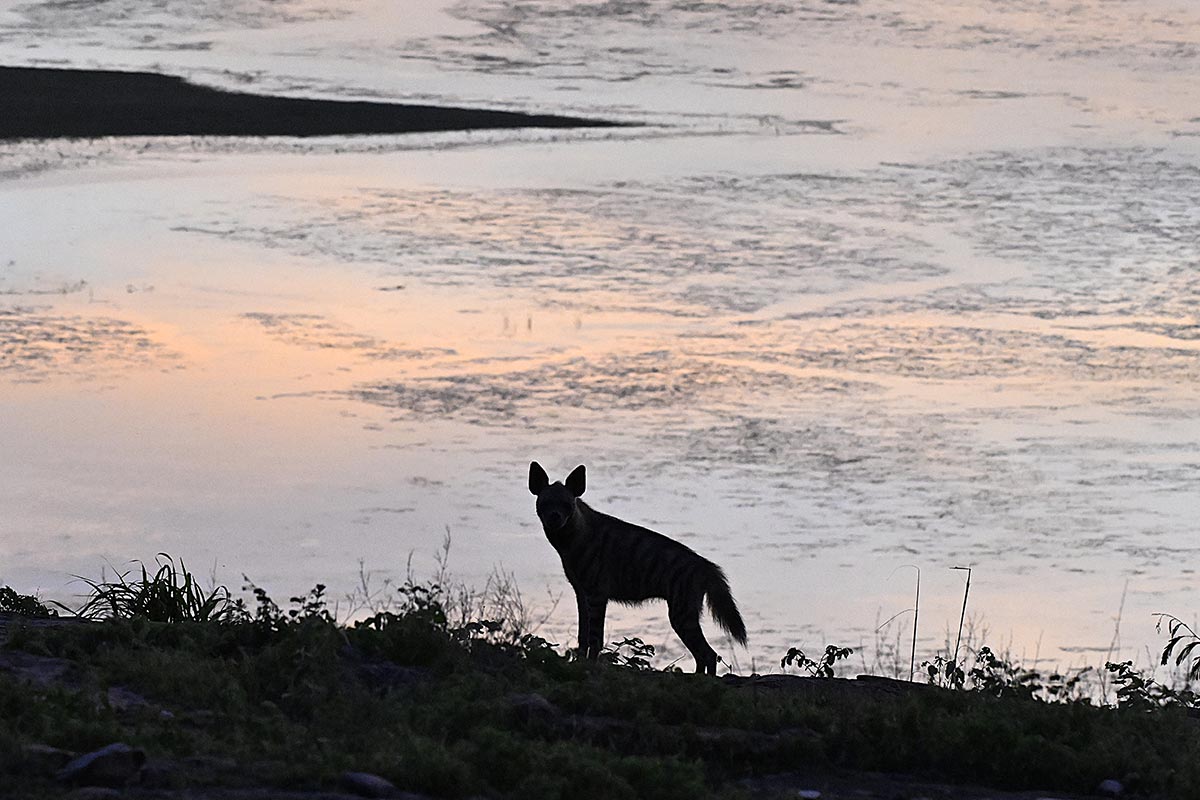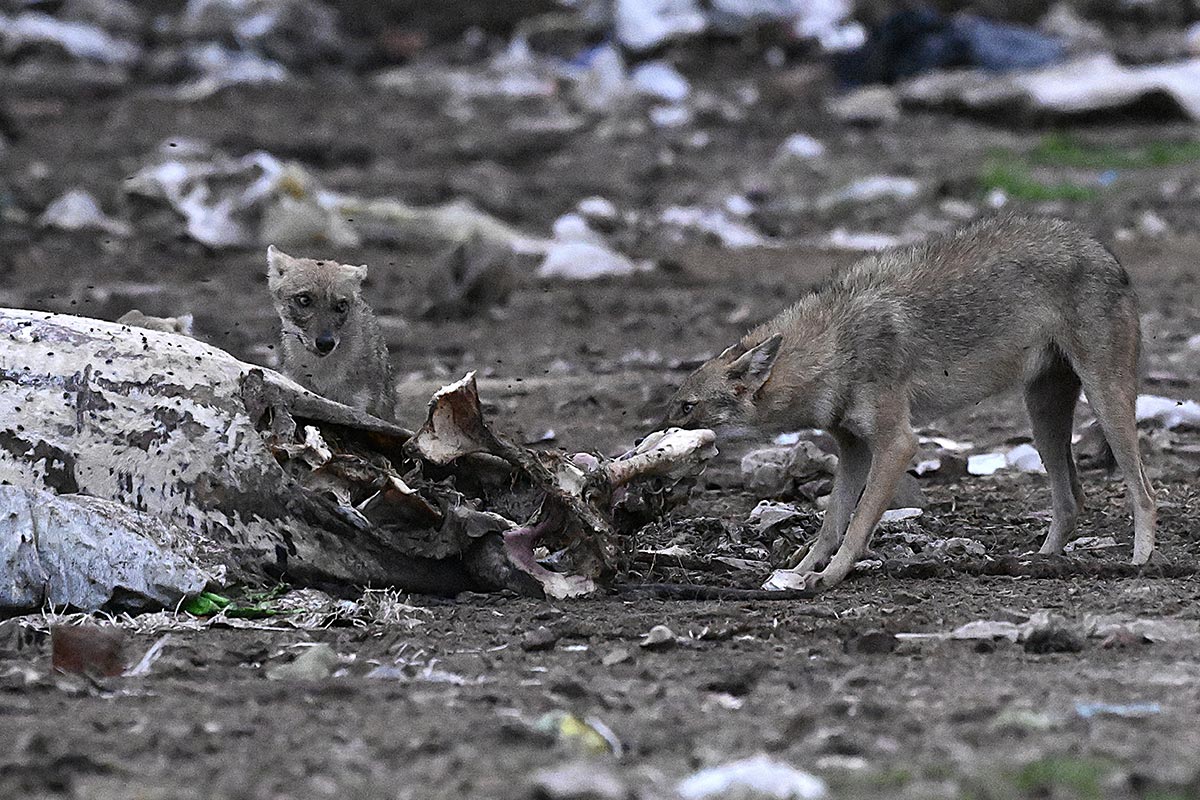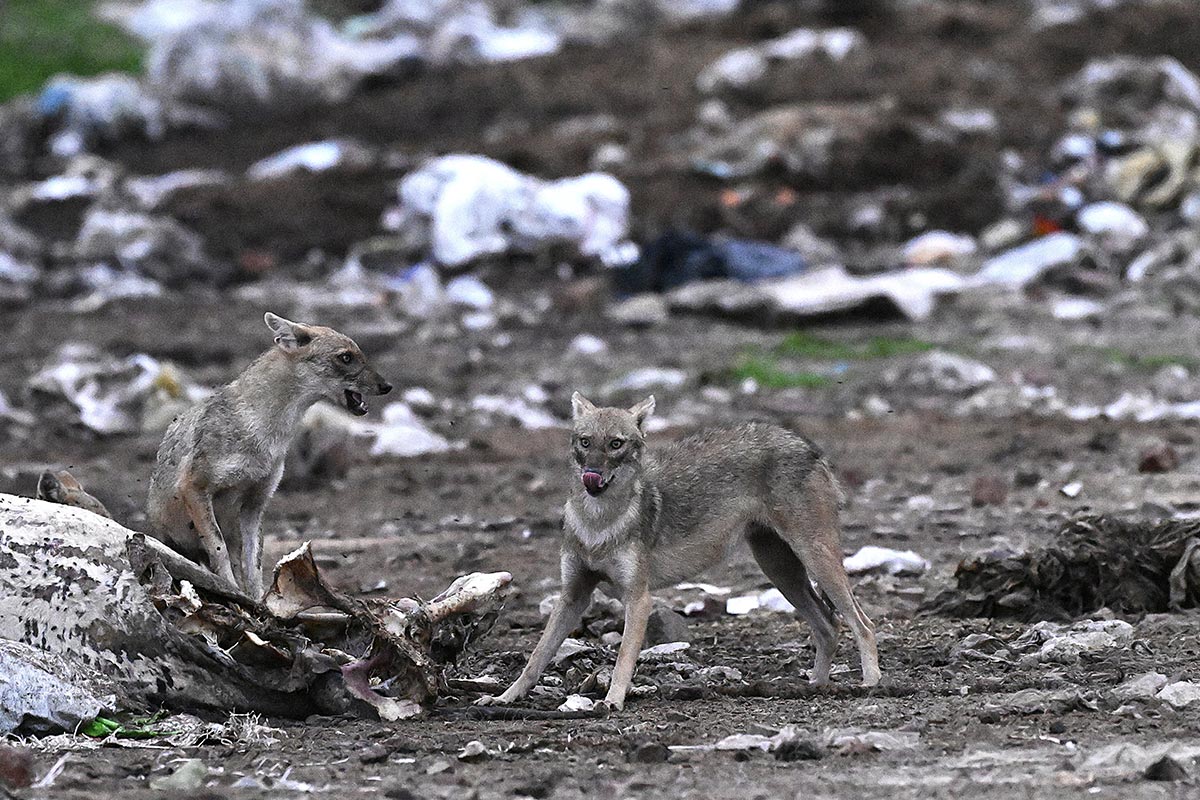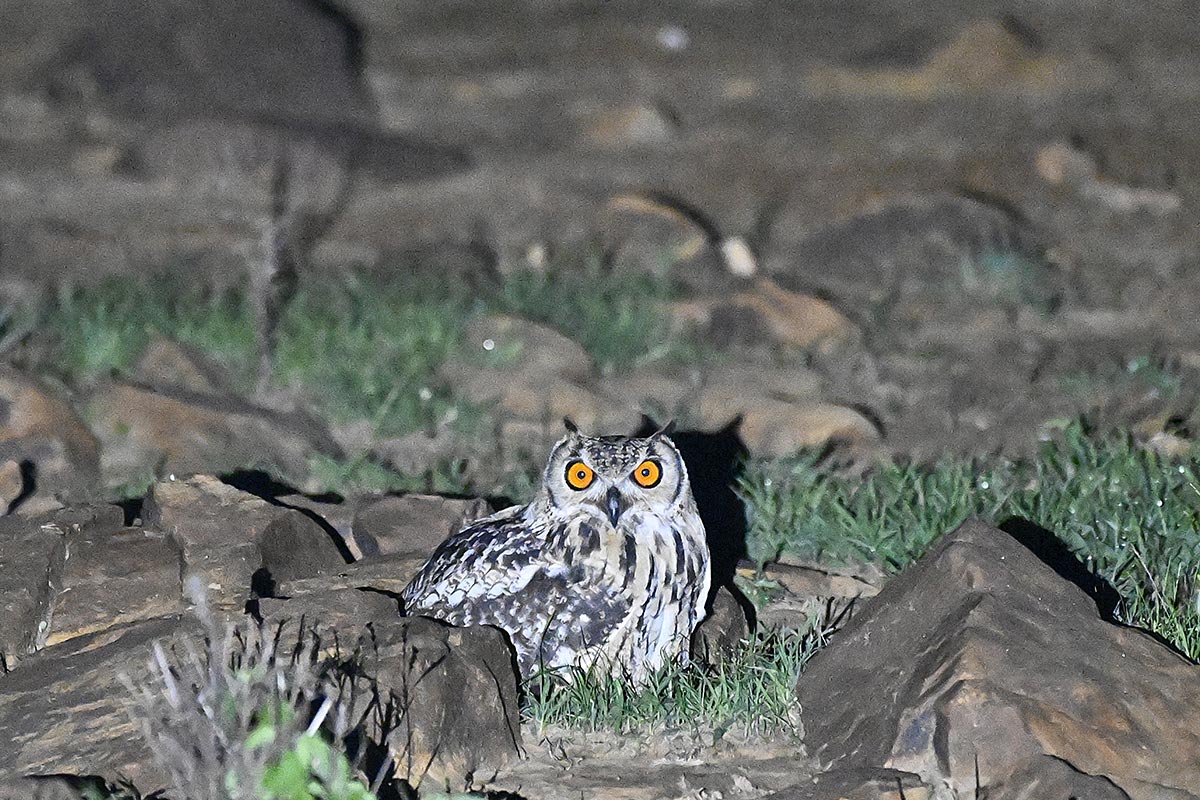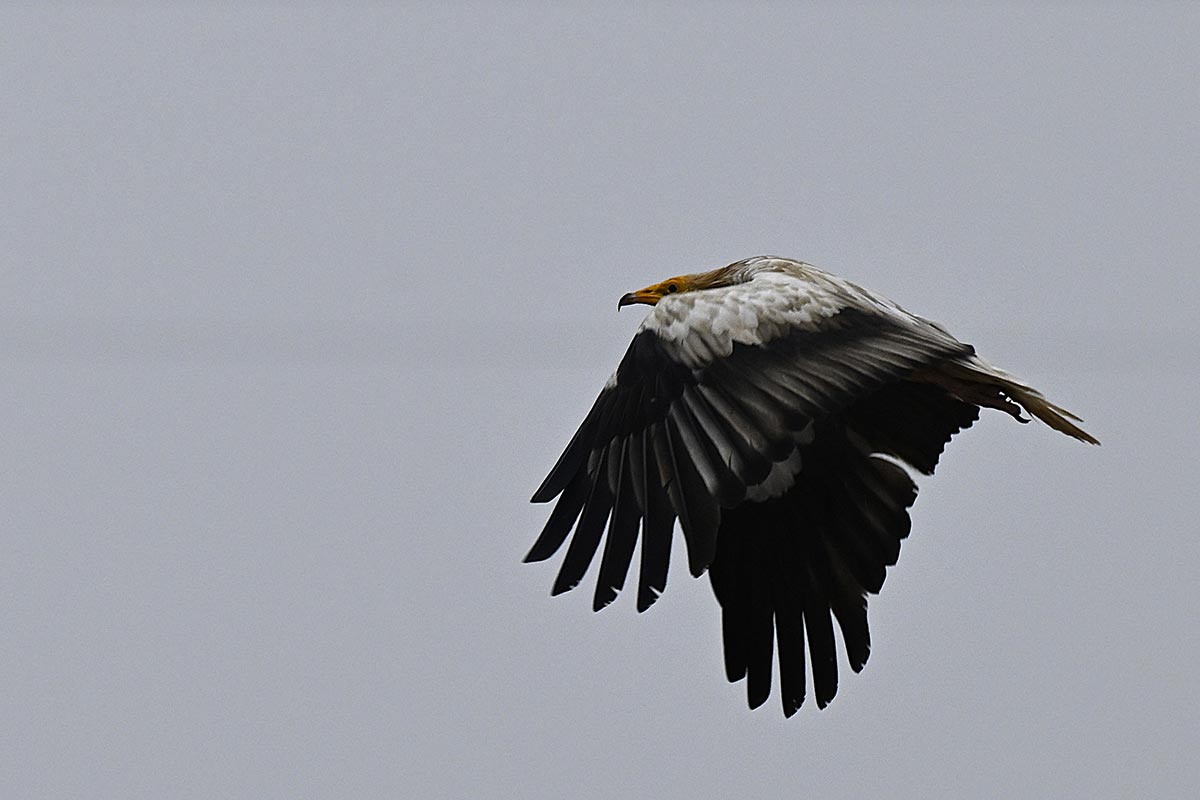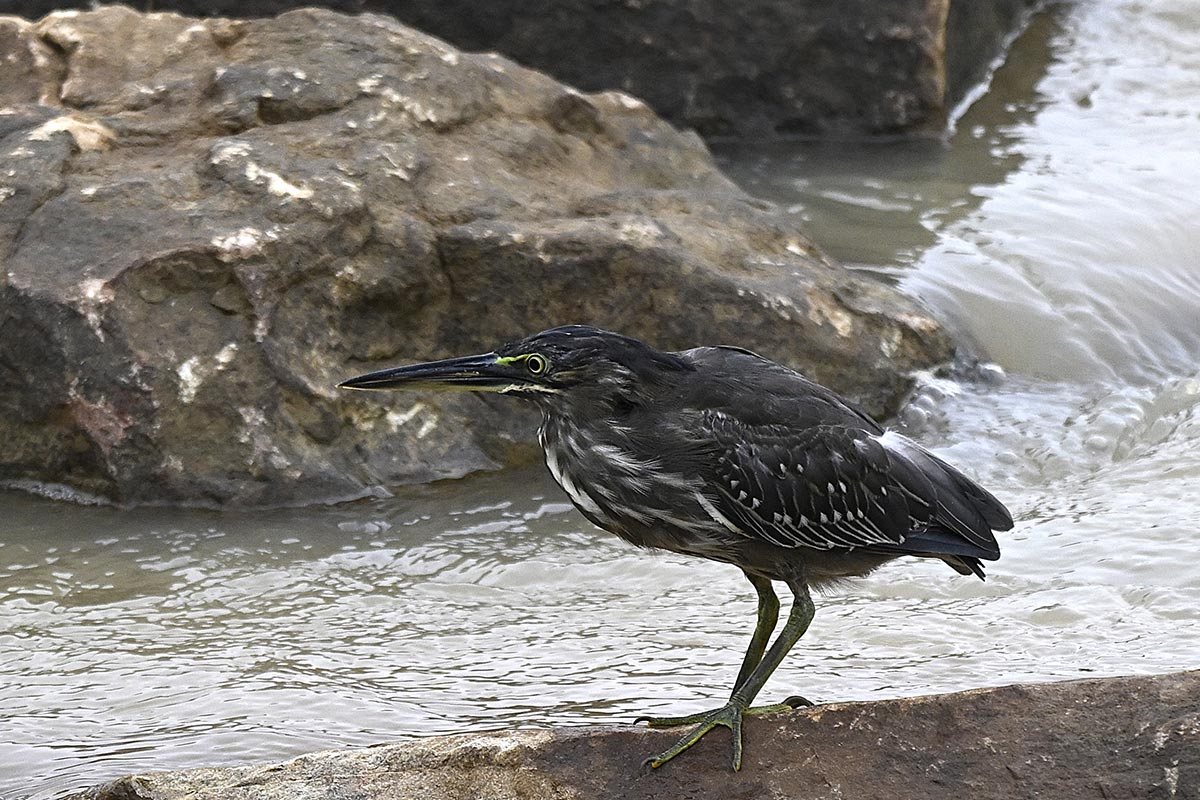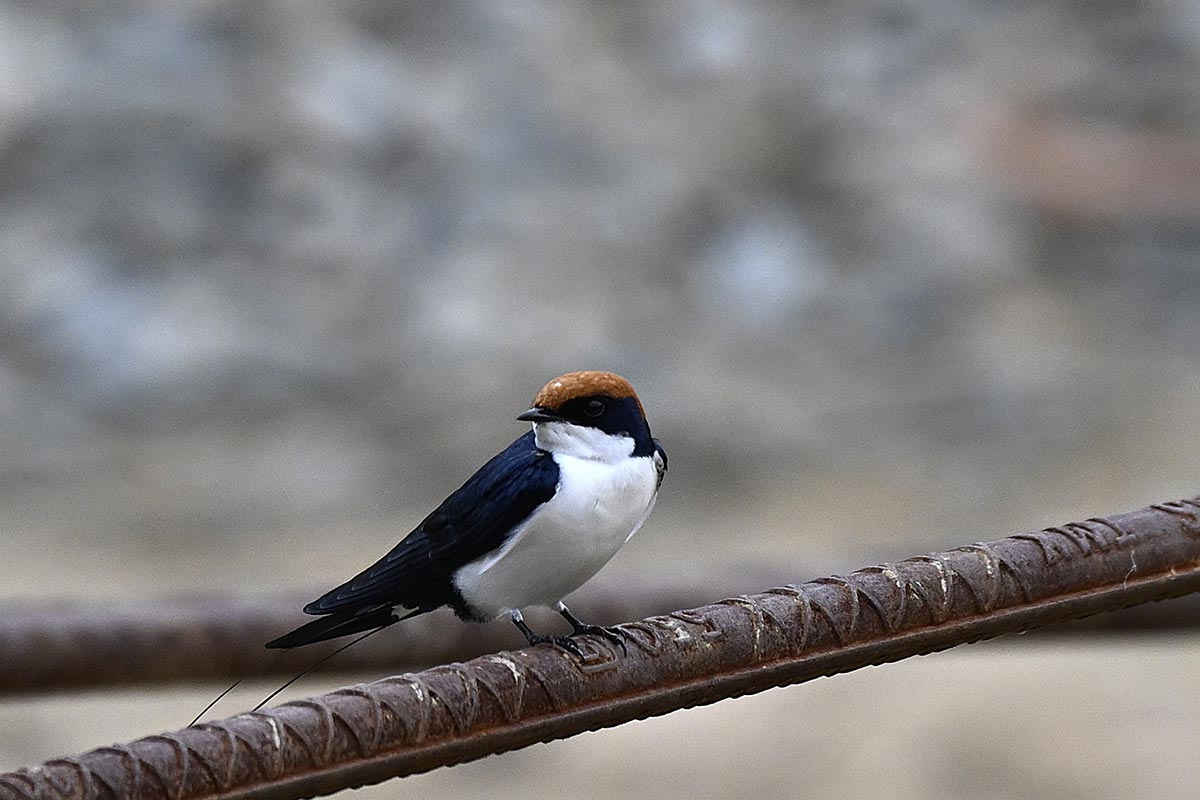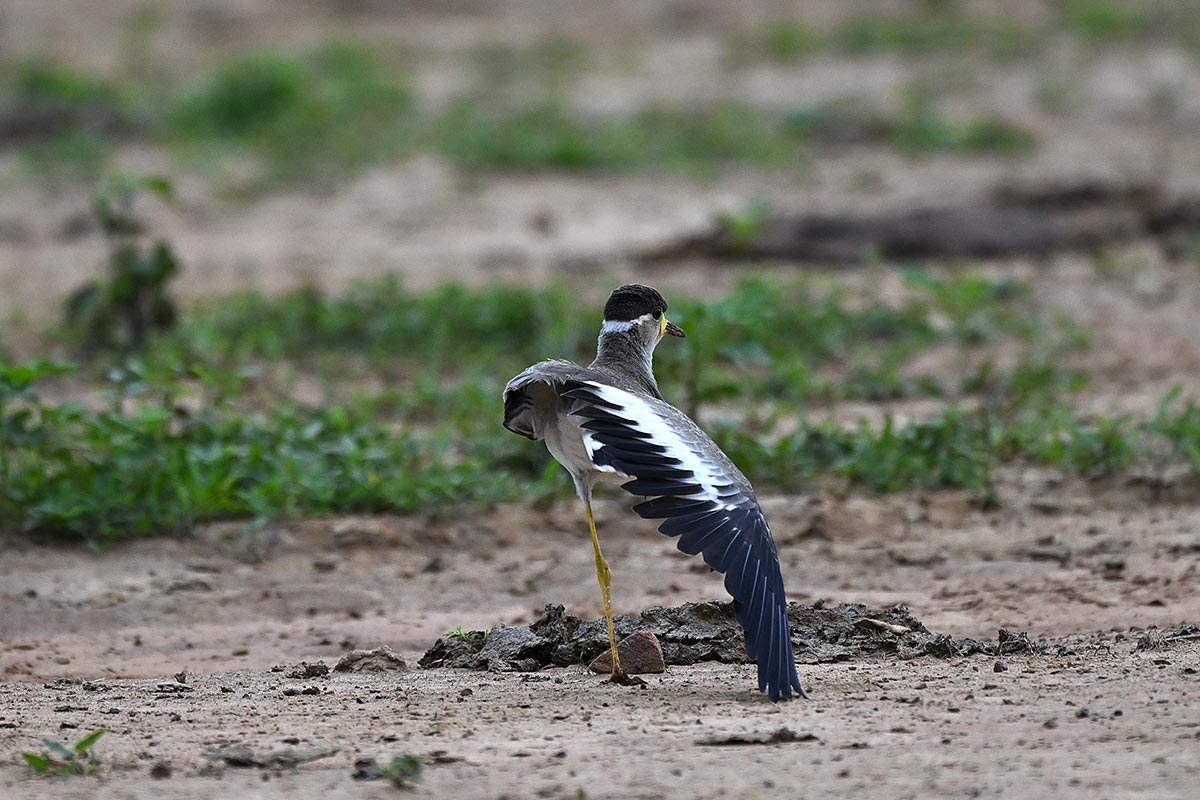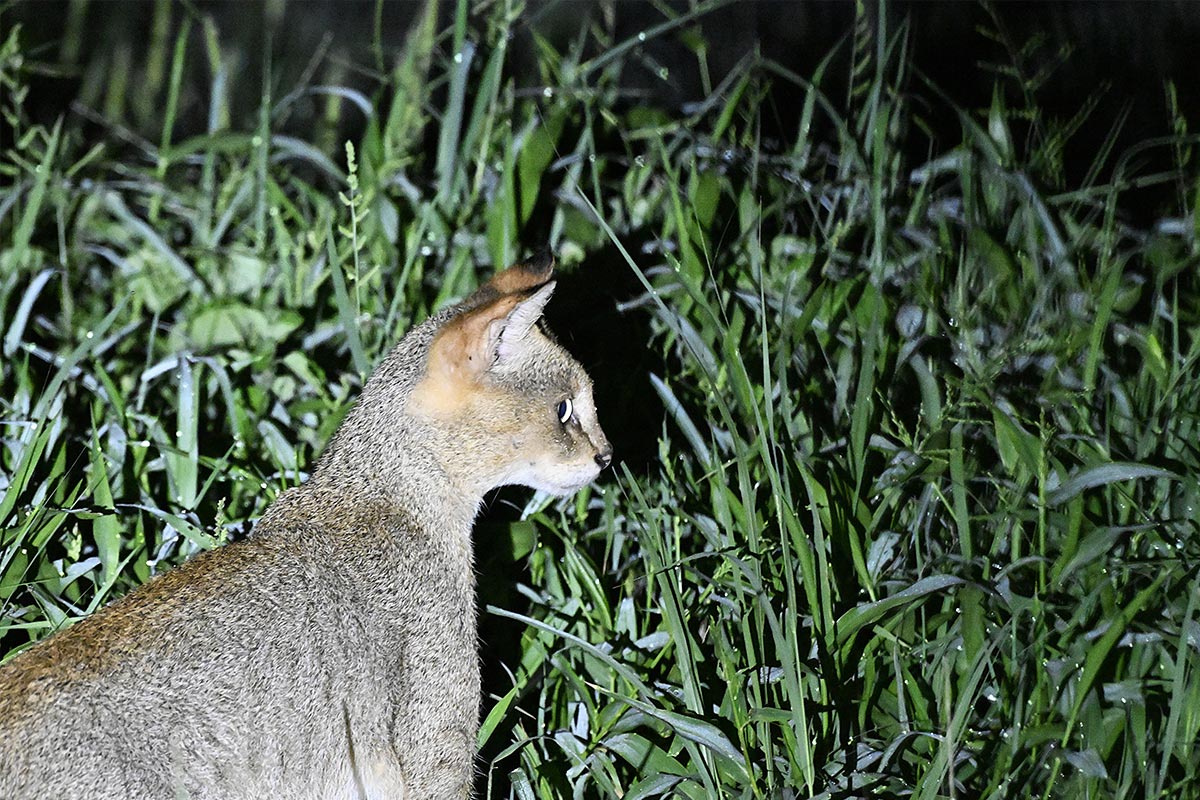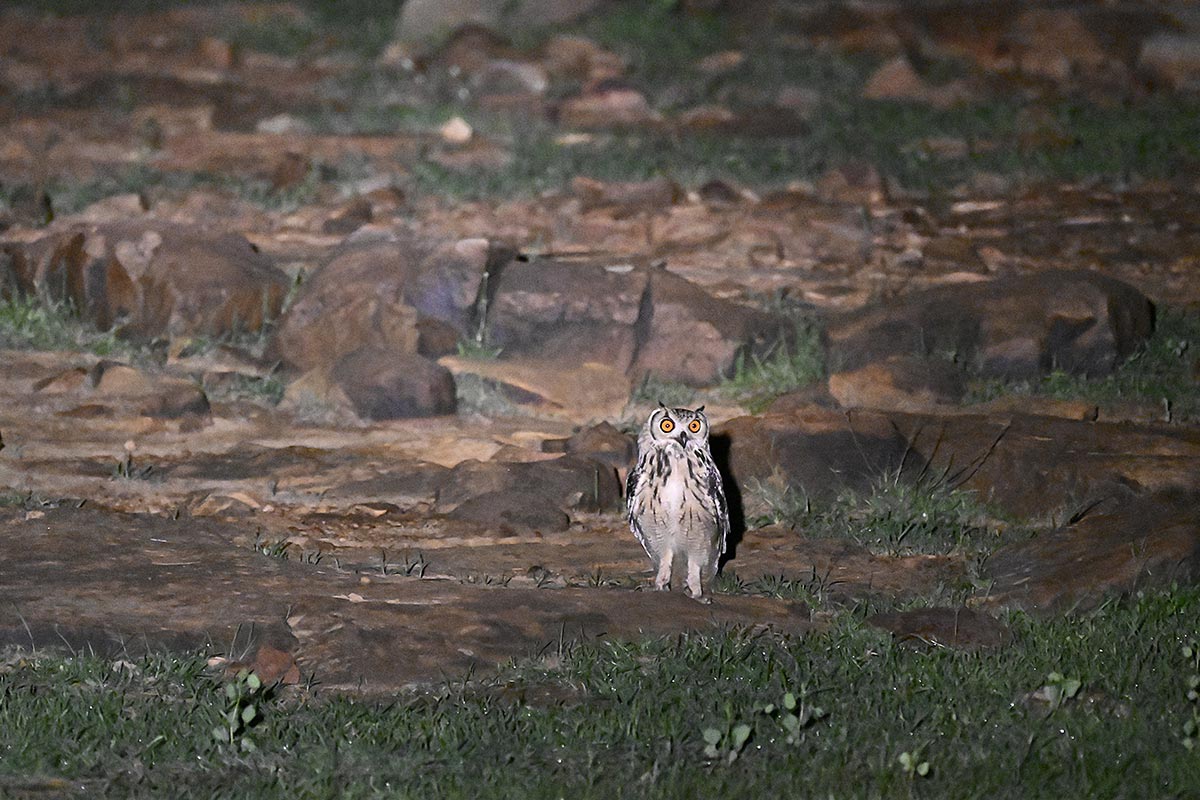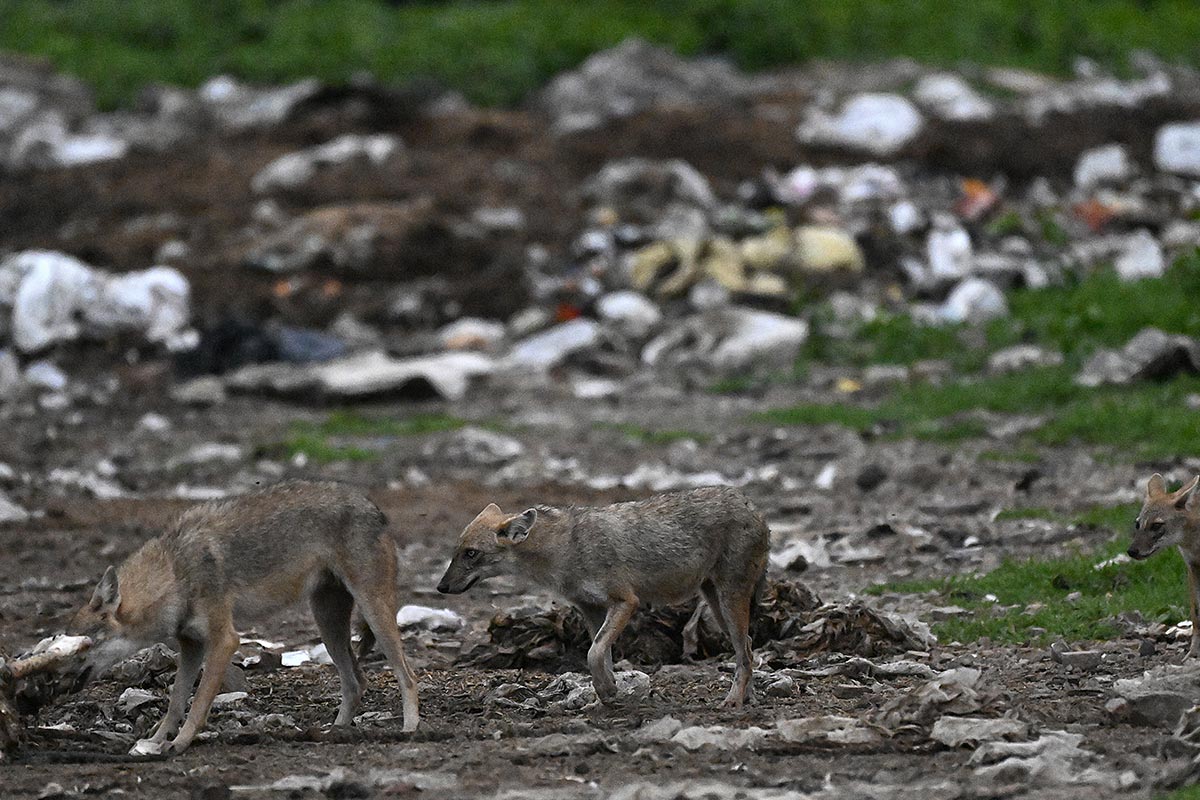2 Nights / 3 Days
5th Aug to
7th Aug 2024
Hot Days / Warm Evenings
4-6 People
Mirzapur, Uttar Pradesh
Introduction
Planning and Introduction
“Yes Striped Hyena are seen almost every day, and so you have an excellent chance to see them. For Small Cats the ideal season is summer when the vegetation is sparse and they are actively moving to hunt for insects and rodents after dark. You have a chance to see some of them like Jungle Cats right now, but other species like Desert Cat and Rusty Spotted less so. You have a good chance of seeing Indian Eagle Owl and Mottled Wood Owl nowadays as well. On our last few visits to see the Hyenas we even managed to see the Eagle Owl dive bombing a Hyena that unknowingly got too close to their nest amidst the rocks.”
The above was an exercpt of my conversation with Kartik Singh who owns a homestay called “Raat Safari” in Mirzapur, and had been monitoring the wildlife there for over a decade, before setting up his homestay for guests to come and stay three years prior.
“Mirzapur” is a name that brings to mind a setting of gun slinging gangsters, lawlessness and a host of criminal activity set amidst the excitement of characters and scripted dialogue that just know how to pull audiences into a world they can voyeuristically enjoy from the safety of a screen at home. A place that was non descript and unknown to the outside world besides being just another district amidst the vast landscape of Uttar Pradesh before the advent of the series on Amazon Prime in late 2018, after which it literally turned into a cult like setting for those who watched the series. Very few know of the wildlife that treads across the Mirzapur landscape though. Not very surprising, as it’s not known for harbouring famed flagship species like Tiger. Most know of Uttar Pradesh’s Wildlife for it’s stunning wilderness stalwarts of Dudhwa and Pilibhit along the Nepal border which harbor a high population of Tigers, Wild Elephants, Swamp Deer and a fantastic diversity of birds in a classic Terai Forest setting. The landscape of Mirzapur is geographically part of the Vindhyan Hill Range and for most part is one of open country with agricultural fields, and villages alongside short grass grasslands, hillocks and small rocky hills covered by shrubs and pockets of dry deciduous mixed forest and hence not associated with the visuals we think of when thinking of wildlife and safari as such.
Wildlife of Mirzapur
Species that do abound in this landscape, but are rarely seen in others due to a variety of reasons, be it due to their highly crepuscular and nocturnal movements, higher presence of mega predators like Tigers, denser vegetation and habitat and more frequent day time safari activities as opposed to evening and night safari, are seen more frequently in this wilderness landscape. They include the lesser known Striped Hyena, the dimunitive Bengal Fox, small cats like Jungle Cat, the endangered Desert Cat and Fishing Cat, and Rusty Spotted Cat which is also holds the title of the world’s smallest wild cat species. The area also has a decent population of Leopard and Sloth Bear, but they are rarely seen due to being restricted to the last remaining forest patches in the district. Add to this birds like the Indian Eagle Owl, Mottled Wood Owl, Savanna Nightjar and beautiful Indian Courser amongst a host of others and you have quite a jewel box awaiting to be looked into.
I finally managed to land up at Mirzapur for two nights in the first week of August and make good on this long pending plan.
Day 1. 5th August (Monday)
Arrival at Raat Safari Lodge
Was picked up at the Mirzapur railway station after my overnight train from Delhi and drove out to the lodge from there. Was surprised to find it took less than an hour through the countryside to reach the hamlet of Patehara where the homestay was located. The approach to it was through a small teak plantation bordered by agricultural fields and led into a lovely little garden with a Neem Tree in the centre and the homestay behind it. The rooms were lovely made with mud, yet with all the comforts including an AC and a modern western bathroom. The first safari was set for late afternoon and so one spent the afternoon just settling in and resting.
An Evening with Hyenas
We set off post 4:30 PM. The destination was the buffer of the Kaimoor Hills Wildlife Sanctuary located a little over an hour away. During the course of the journey my conversation with Kartik made me aware as to how passionate he was about the wildlife of his home district and the rigour with which he and his team had located and monitored various species of mammals across the landscape over the years. We reached a large rocky hill at the edge of a lake slightly before sunset and walked up on top to the spots where they had regularly seen the Striped Hyenas and Indian Eagle Owls appear. An Ashy Crowned Sparrow Lark took off as I sat down to look across the the rocky edge of the hill with the lake and setting sun in the background, and my guide Vijay went on a bit further to scan the hillside. Around 10min later he beckoned me from 70m away to come to him as he had seen something. I walked upto him and after walking a few steps further close to the opposite edge of the hill from where we had come up spotted a Striped Hyena standing and looking at us 30m away. It however got a bit spooked seeing us approach and skulked into some heavy undergrowth nearby. Vijay then sat me down on a rock 20m from the undergrowth saying the chances it would come back out from there were fairly high and so I should wait, while he would go back look along the rocky edge where both Eagle Owls and Hyenas appeared to see if another might come out. A few minutes later the sun had almost dropped completely on the horizon, yet as one was on top of the hill the light available for viewing was still fairly high. I looked back at the undergrowth and just in front of it standing only 20m away stood the Hyena curiously looking at me. It took all of my experience of viewing wildlife over the years to not have my inner bubbling excitement get the better of me as I slowly reached down for my Camera to capture the moment in a picture beyond the mind’s eye. Not feeling threatened the Hyena casually came out and slowly ambled along as it circled around behind me keeping the 20m distance a constant which it was comfortable with and then went further out to the rocky edge in front of the hill that overlooked the lake.
I then walked over to the other viewing point where Vijay was seated and watching the Hyena from 50m away. We could hear the Eagle Owls calling from their rocky shelters just below the rock ledge where the Hyena had lain down, and had us anticipating them appearing and dive bombing the hyena like they had so many times in front of Kartik and his team. That unfortunately did not happen today, and so we satisfied ourselves with just the Hyena and observed it instead. It lay there for a minute or so before defecating and marking the spot and moving off out of sight downhill. I had been informed there were around seven Hyenas who used that hill and so we remained hopeful even after this one disappeared. Soon another slightly smaller individual appeared from another spot in the vegetation and offered up a treat of a picture of it silhouetted against the sunset with the lake behind. It then came and marked the same rocky zone on the ledge the previous one had marked before walking away out of sight as it headed further downhill. It had only just moved out of sight when a third one suddenly appeared out of the undergrowth in 50m in front of us and started letting out a moaning growl as it saw us standing there. It kept emitting that moan, as it walked upto 30m away, before turning and circling around to a stretch of short shrub and rock located behind us, and just like the previous one maintained the constant 30m distance from us that was it’s chosen range of comfort. It was when we noticed it defecating at a spot on that short shrub rock area located behind us, was when we realized it had been moaning in despair at us standing in it’s intended pathway, and it had thus taken the long way around to get there. There were a few jackals that had appeared behind the Hyena as it was defecating and marking its territory. The Hyena then ambled away and with the light now falling drastically as well we headed back down to the car and make our way back for dinner post an absolutely incredible evening. Jungle Cat & Indian Fox post dinner Post dinner we headed into the fields around the village with the hope of finding the smaller wild cats. A Jungle Cat hunting at the edge of a small canal, a Bengal Fox foraging in a field and Savanna Nightjars really added an accentuation to the glow of an already fabulous day.
Day 2. 6th August. (Tuesday)
A visit to the River
A heavily overcast sky with light drizzle opened up the morning and had us drive out to this stream area a few km away. The stream was muddied up with sediment and surrounded by dense vegetation and trees giving it a nice and spooky feel when standing on the banks. Aptly enough, the stream was supposed to house a good population of Marsh Crocodiles and hence the spooky feel it offered felt just right. There was no crocodile to be seen that day, but the humidity and stillness of the muddy waters bordered by the dense vegetation certainly gave a feel of something lurking around. There was also supposed to be a pair of Mottled Wood Owls that resided in a tree next to a small villagers hut right next to the stream as well. However, we were told that the other birds around had mobbed the Owls earlier in the morning and forced them to fly across the stream and find refuge in the shade of a dense Banyan Tree there. With no track to reach the said Banyan Tree we decided to head back and take a call later whether to come back in the evening and try for them again, as they were expected to return. Despite the owls and crocodiles not materializing we did have a good morning birding along the road on the way back and got some good views of Striated Heron, Pied Kingfisher, Wire-tailed Swallow, Common Hawk Cuckoo, Yellow-eyed Babbler, and some Scaly Breasted Munias carrying nesting material to keep in sync with their annual breeding cycle.
Interactions at a Carcass Dump
Later that afternoon with the sky still heavily overcast, and literally no sunlight we decided against visiting the stream area with owls and crocodiles again, and instead visit a carcass dumping yard to look at Egyptian Vultures, Jackals, and another real possibility of Striped Hyenas. The yard was located just under an hour away from the homestay and certainly not for anyone who felt nauseated by the smell of decaying flesh or the sight of scavengers and flies feeding upon carcasses of dead cattle etc.
The Egyptian Vultures and Jackals were there in numbers when we got there, but were sat at a distance from the carcasses of two dead cattle as we got there. We saw the reason as we got closer to the carcasses. There was a pair of stray dogs already feeding on one of them, and as they were bigger than both the jackals and vultures they were being given a wide berth. There was a large forested hill behind the carcass yard, and the area from where the Hyenas usually came out.
The dogs soon ate their fill and left the carcasses, and thus gave a little more licence to the others to approach. The Vultures were a bit too wary of our presence as we stood outside the vehicle and thus soon just flew over the carcass and away up onto an electric pillar far up on the hill. Their congregated number on that pillar suggested it might be their roost for the night and so they may not come back for the kill until the following day.
We were stood 40-50m from the carcasses and saw the jackals congregating all around from a distance yet refusing to approach the carcasses any closer. Realising we were the most likely reason, we parked our vehicle where we had been stood and now watched seated from within. The difference our decision made became apparent as the minutes went by as the carcass was first approached and fed upon by a pair of Greater Coucals, before finally giving way to the Jackals.
Watching Jackals feeding is always a joy as they offer up insights into their societal hierarchy during the course of interactions in such a scenario. There is always one adult who dominates the carcass, and will constantly snarl and snap at others who may come near its preferred zone of feeding on the carcass. The other less dominant ones who may be from the same pack may feed on areas of the carcass that are at a few feet from the dominant adult or pick a morsel here or there before being snapped at and taking it to a comfortable distance before feeding on it at leisure. This is exactly what was transpiring with one adult starting the feed and then moving to the centre of the carcass followed by the other who after facing the customary snap and snarl at its approach fed on the flesh hanging near the head.
Soon two smaller individuals, most likely the sub adult pups of the pair approached submissively with their tails between their legs and got the same treatment of snap and snarl before finding a separate putrefying piece to drag off and do with as they pleased. The two younger ones showed another uncommonly witnessed behavior amongst carnivores when separate with their rotting piece of flesh. The one dragging it realized it wanted to go back for more as it was not interested in its prize any longer. The second pup then rolled itself into the putrefying meat like it was one of it’s favourite aromatic cushions to get comfort from. Had read about the same being done by large carnivores like tigers as well, but never seen it, and so was fascinating to witness the same in an albeit different species.
The light was fast fading and the expectation for one or more of the Hyenas to approach from the forest was there. There were Peacocks up in the hillside who were giving their honking alarms signaling the movement of a possible predator. We waited, and hoped, and then waited some more. Our guide Vijay then suggested we check the other dumping spot on
the backside of the same hill that was located closer to the highway we had approached this one from, and see if the Hyenas had possibly come there. It was a 15 min drive but that spot also yielded only Jackals. We then drove back to our original spot and though the headlights didn’t reveal any Hyenas at the carcasses, the multitude of eyes from all round the carcasses indicated even more Jackals than anticipated. As we had already observed the Jackals in the evening light a little while earlier we decided to go back to the lodge and head out for the final night safari post dinner.
Eagle Owl Bonanza
The final night safari tonight had us go to a dry lake bed full of rocks and short grass at the edge of a dam around 30 min from the lodge. The aim was once again to find small cats, hyenas and owls. Though we didn’t get lucky with the first two, we saw two pairs of Indian Eagle Owls, two of whom gave us some fabulous long confiding views from a mere 20-30m away as they sat perched up amidst the rocks on the ground and scanned and listened for prey all around them.
We found another Bengal Fox on the way back near one of the villages as it foraged for food around 60- 70m away from the road in a field.
Day 3. August 7th . Wednesday
Final Morning Drive
Decided to go back to the river bed from the previous night to look for birds like Indian Courser, Sandgrouse and Painted Francolin. Looking at where we had been watching the Owls the previous night and getting the view of the same space in the light of day can really change one’s perspective at how things appear to be. The lake bed the previous night had looked a lot larger and foreboding with pathways of approach and exit not being the clearest to view. The light falling on it now just allowed it to feel like a normal flatland and almost unreal in its ease of approach compared to how we had navigated it the night before. Nature most likely read my mind on this and just as we were photographing a Yellow Wattled Lapwing the heavily overcast sky opened up and a deluge of a rain shower came down. Vijay knowing his geography well took the track into forest that connected to the highway as he knew the soft sand on the lake bed would become an impassable sink of mud before we could exit. The way we skidded almost to a drag race style while exiting let us know we had managed to avoid being stuck there just in time.
Highlights
61 Species of Bird including fabulous views of 4 individual Eagle
Owls in a night.
7 Species of Mammal including three Striped Hyenas, One
Jungle Cat, and two different Indian Foxes.
Diary of Highlights
Day 1.
- 3 Different Striped Hyenas. One just 20ft away as one sat on a hill.
- Asiatic Jackals
- Jungle Cat in a Field at night
- Indian Fox Foraging in a Field at night
- Savanna Nightjar
Day 2.
- Common Hawk Cuckoo
- Multiple Jackal families and Egyptian Vultures feeding at a Carcass dump in the evening
- 4 different Indian Eagle Owls in a River Bed at Night
- Indian Fox foraging in a field at night


